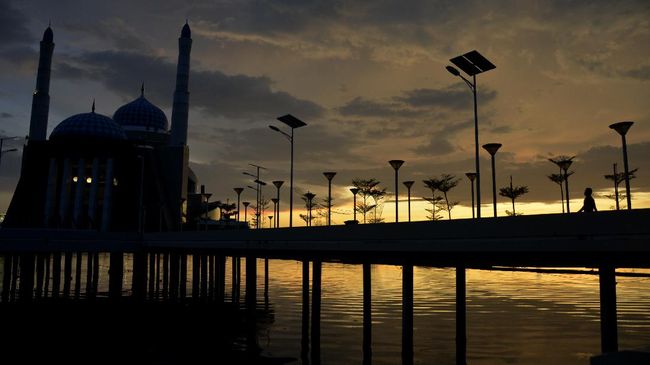Jakarta, CNN Indonesia —
A viral video clip in cyberspace, which mentions Sun published from the north in Jeneponto Regency, South Sulawesi. The phenomenon is called the result of the annual apparent motion of the Sun (GSTM).
The Meteorology and Climatology Geophysics Agency (BMKG) explained the occurrence of natural phenomena on Earth.
Head of the BMKG’s Climate Information and Air Quality Production Sub Division, Siswanto, explained that the phenomenon was related to the apparent annual motion of the Sun (GSTM).
The GSTM phenomenon is explained to make the sun not always rise in the east direction, but seems to rise to the north or south depending on the particular month.
He said the occurrence of the GSTM phenomenon was caused by the earth’s revolution, namely the rotation of the earth in its orbit around the sun. However, Earth’s axis when it revolves around the Sun is not perpendicular, but tilted 23.5 degrees.
This causes a false motion as if the Sun is moving more north or south, especially when observed from the equator such as from the Indonesian region.
“On December 22-21 June the sun seemed to shift to the northern hemisphere and on June 22-21 December the sun seemed to move towards the southern hemisphere. This also causes sometimes as if the sun rises from a slightly north or south,” said Siswanto via text message, Friday (18/6).
In addition, Siswanto explained that there are two types of apparent motion of the Sun, namely annual and daily GSM. For the annual apparent motion of the Sun causes the change of seasons.
“Then the daily apparent motion of the Sun (GSHM) results in a change of day and night on planet Earth,” he said.
The movement of the Sun is considered pseudo, because for observers on Earth that appears to be moving is the Sun.
In fact, he said the ‘movement’ of the Sun that is seen by observers on Earth occurs due to the motion of the Earth towards the Sun. The Earth’s rotation causes daily GSM, while Earth’s revolution causes annual GSM.
Quoted from the Astronomical Sailing Science book for ANT-III and IV, GSM also causes differences in the length of day and night in various parts of the Earth.
Mentioned that the southern hemisphere, the day will be longer between September 23 to March 21. While in the Northern Hemisphere the days will be longer from March 21 to September 23.
When GSM is positioned right at the equator, the Indonesian region experiences what is known as a day without a shadow which usually occurs around March and September every year.
(can / mik)
– .


